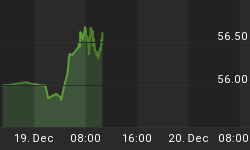What should be clear to all Americans is that the need to grow the economy has never been more critical. But what constitutes real growth and the pathway to achieve it, has never before been more confused.
The need for above trend growth in GDP was made even more pressing last week when the Treasury announced that the budget deficit for fiscal 2009 breached $1.1 trillion. The excess spending over revenue for June was $94.3 billion, the first deficit for that month since 1991 (fiscal 2010 will begin on October 1st). In addition, the national debt now stands at a record $11.6 trillion with trillion dollar annual deficit projections as far as the eye can see. While we continue to pile up a record amount of debt, the revenue outlook continues to decline, as the Administration's growth projections remain overly optimistic.
So it is absolutely critical -- unless our long term strategy is to hyper inflate or default on our debt -- that we dramatically expand the tax base. So I thought I should write a few brief words explaining what viable, long lasting growth really is and how it is best achieved.
Real growth comes from empowering the private sector. The best way to achieve this is to allow the private sector to control more of their own money. Cutting taxes and reducing public spending serves to shrink the size and scope of government while at the same time increasing the power of individuals. It should be obvious why it is most important for individuals to have control over the allocation of their resources. Only you (the private consumer) know best what needs to be produced and what needs to be consumed. That's because the individual risks his or her own capital, whereas the government risks other people's money. Since government spending originates from a central planning authority, it is not subject to the vetting process of those who have the most to profit or lose from that decision. The result is an inefficient distribution of resources and a misallocation of capital.
Likewise, only the private sector is best at creating job growth. Government created job growth exists by fiat and is not subject to the profit and loss analysis of the private sector. The jobs that are created by private sources (those who have the most skin in the game) have a predilection to be economically viable, sustainable by the free market and are accretive to economic growth. A government dictated source of employment is not subject to market forces. Therefore, the relevant question is not asked; can the job exist without government support or does it add to the creation of new capital?
True growth does not come from a stimulus package or from a doubling of the monetary base. Placing the economy further into debt or expanding the money supply beyond its capacity for growth only assures future tax increases and inflation.
That is why all this talk about how many jobs the government will create or save is nonsense. Job growth has been anemic for the past decade because it has been based on the servicing of asset bubbles. What we need is a stable currency and low inflation so that economic growth is balanced. It is also inane to speak about how the public sector must increase spending because the private sector is deleveraging. The private sector is deleveraging because market forces necessitate that debt levels contract.
The recent government actions are constructed to interfere with the cathartic reconciliation process of markets. And that is why talk of a viable and healthy recovery in the economy is not probable until our government assets to the belief that markets are the solution, not the source of our infirmity.
*Tired of paying fees while your account value plummets? Learn about our new performance-based pricing.
Be sure to listen in on my Mid-Week Reality Check
Follow me on Twitter: http://twitter.com/michaelpento















